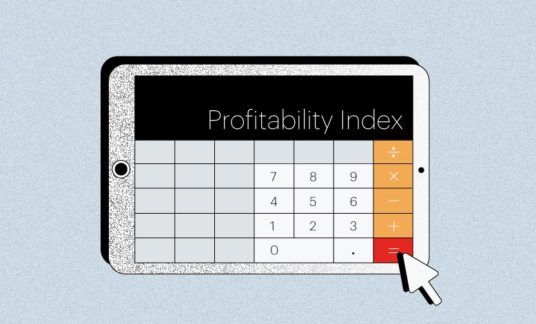Running a small business can be challenging. You need to anticipate your customer’s needs, provide excellent customer service, deal with competitors and manage inventory and employees.
That’s just the beginning.
You need to make a profit and keep a close eye on your cash flow. While you want to make a profit, you must have enough cash at any time to fund inventory, pay your bills, and your employees.
Many small businesses had significant cash-flow problems in 2020 because of shifting consumer demand during the pandemic and inconsistent supply chains. Despite a sharp drop in cash flow during the second half of 202, 65% of small business owners expect their cash flow in 2021 to be good or very good.
That’s good news, as low cash flow is one of the top reasons many businesses fail, according to the Small Business Administration’s Office of Advocacy.
Operating cash flow and net income are two of the most important financial measurements small business owners need to monitor. So, what is the difference between cash flow and net income and why is it important to monitor both?
Cash Flow vs. Net Income: Definitions
Net income is the profit a business makes during the period you’re measuring. Cash flow is the amount of cash that’s going in and out of the business. Both measurements are important in measuring the overall financial health of a company.
What Is Cash Flow?
Cash flow is the amount of cash (and cash equivalents) going in and out of a business during a given period. Tracking cash flow helps a business see how it is managing its cash position to keep operations running and meet any debt obligations.
Cash flow takes into account income and expenses such as:
- Revenue generated
- Payments made to suppliers or vendors
- Payroll expenses
- Rent or Mortgage payments
- Income taxes
What Is Net Income?
Net income, also referred to as net profit, is the company’s “bottom line,” so to speak. It’s what you have subtracting operating expenses, interest, taxes and other business expenses.
The first line in your cash-flow statement will be net income. While cash flow makes adjustments for noncash expenses and any changes in working capital, it doesn’t account for other expenses that are included in net income, such as:
- Depreciation
- Amortization
- Share-based compensation
The timing of when products or services are delivered and when businesses get paid play a role in these calculations, too.
For example, you might extend credit to a customer and allow them to take delivery of your products today, but delay payment for 60 days. While you would recognize the revenue today on your balance sheet, you don’t actually have cash in hand until the bill is paid two months later. This can account for income statement and cash-flow differences and why your cash-flow statement vs. income statement can show different figures for the same period.
You also can have a positive cash flow and negative net income. If you accrue expenses, they would be recorded when they are incurred, not when they are paid. For example, you might make a purchase in one quarter but not have to pay for it until the next quarter. In this case, you could experience negative net income in the quarter while still maintaining positive cash flow.
How to Calculate Net Cash Flow vs Net Income
Here’s how to calculate net cash flow vs net income.
Net Income Formula
Net Income = Total Revenue – Cost of Goods Sold – Expenses
Net Income Formula Example
Here is a simple example of the net income equation. Let’s say you have total revenue of $50,000 for the month and a cost of goods sold (COGS) of $20,000. Besides the COGS, you need to subtract other operating expenses for the quarter. For our example:
- Rent: $5,000
- Utilities: $1,000
- Payroll: $10,000
- Interest on Loans: $1,000
- Taxes: $2,000
- Misc. Expenses: $1,000
- Depreciation: $2,000
Your expenses for the quarter total up to $22,000.
Your net income formula would then be:
$50,000 – $20,000 – $22,000 = a net profit of $8,000
Net Cash Flow Formula
Net cash can be calculated in two different ways.
Net Cash Flow = Cash Receipts – Cash Payments
This is the easiest way to track your cash flow.
You also can break down cash flow further into categories to help you monitor your operating, financing, and investment cash flow separately. In this case, the formula would be:
Net Cash Flow = Operating Cash Flow (CFO) + investment Cash Flow (CFI) + Financing Cash Flow (CFF)
Net Cash Flow Formula Example
Here is a simple example of the net cash flow equation. If you had $50,000 in cash that you’ve received for sales and the same expenses as above, the formula would be straightforward and fairly easy to calculate by just leaving off the depreciation.
$50,000 – $20,000 – $20,000 = cash flow of $10,000
However, revenues received and expenses usually vary month-to-month and quarter-to-quarter. While revenue is recorded when it’s earned in an income statement, it only is recorded in cash flow when it’s paid. So, a more typical situation would be that you received half of the $50,000 you’re owed during the quarter and the rest will be paid to you at a later date. Even though you have a positive net income, your cash flow is now negative.
$25,000 – $20,000 – $20,000 = cash flow of negative $25,000
You can see quickly how important it is to manage your cash flow even if you are making a profit.

Net Cash Flow vs. Net Income: What’s More Important for a Small Business?
Ultimately, net income is the profit that’s left after all the accounting is done and the bills and taxes are paid. Cash flow measures the money that’s coming in and going out during a period.
When you have a strong cash flow, it shows you have more cash coming in than going out. A healthy cash flow is seen as an indication that you have a healthy business. With cash on hand, you can meet your debt obligations, reinvest in your business or fund growth initiatives.
Conversely, you might show a net profit, but not have enough cash on hand to pay your bills. For example, you may have to buy more inventory to be ready for anticipated demand. There is no impact on your net income since you swapped cash for an inventory of equal value. However, this affects your cash flow because you have to pay for the goods now.
Cash flow also is more difficult to manipulate. You can easily check the balances in the business account at the beginning and end of a period.











